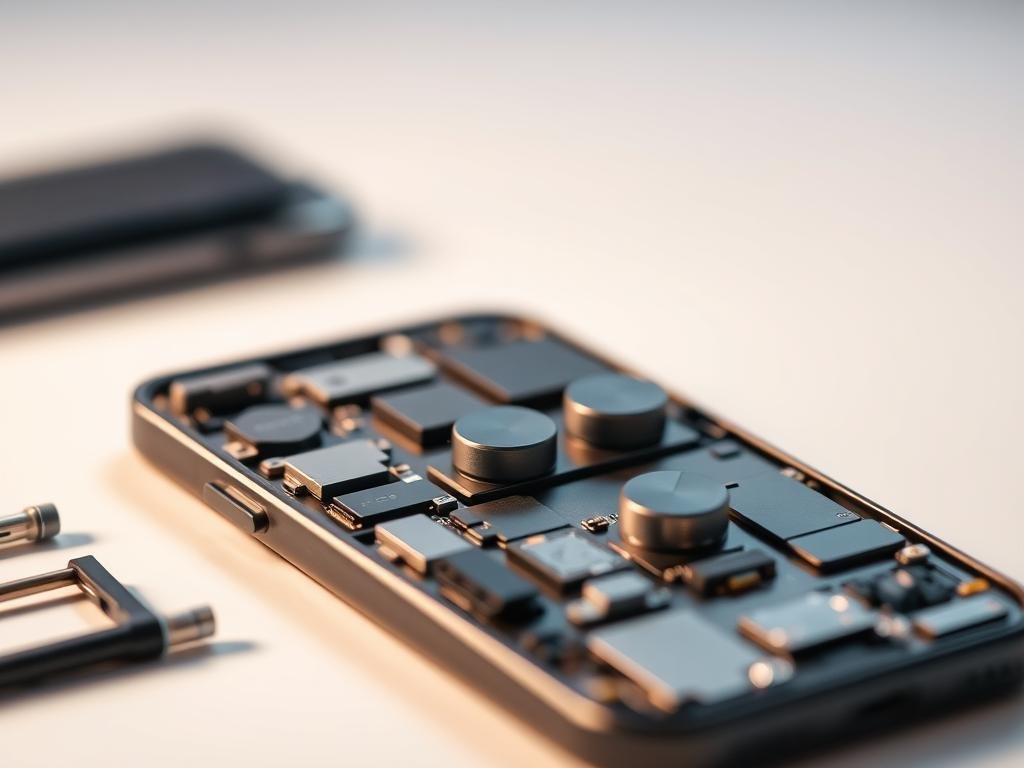Are you having trouble with your smartphone controls, like the Volume and Power Buttons? A broken button can really mess up how you use your phone. It makes it hard to change the sound or turn it on and off.
This guide will help you figure out and fix problems with these important buttons. You’ll get clear steps and tips from experts. This way, you can get back to using your phone like it should be.
Key Takeaways
- Diagnose common issues with Volume and Power Buttons.
- Learn step-by-step repair instructions for your smartphone.
- Understand how to maintain your smartphone controls.
- Discover expert tips for troubleshooting button malfunctions.
- Regain full functionality of your device with ease.
Understanding Common Issues with Volume and Power Buttons
First, you need to know the common problems with volume and power buttons. These buttons are key for your phone’s electronic device operation. If they don’t work right, it can really mess up your experience.
When you have trouble with your phone’s buttons, figure out if it’s a hardware or software issue. Experts say checking for dirt or damage can help find the problem. “Knowing if it’s a software or hardware issue is key,” as it tells you how to fix it.
Symptoms of Faulty Buttons
Faulty volume and power buttons show certain signs of trouble. These signs include:
- Buttons that don’t respond when you press them
- Sticky or stuck buttons that need too much force
- Buttons that work sometimes but not others
Spotting these signs early can help fix the problem before it gets worse.
Causes of Button Malfunctions
There are many reasons why buttons might not work. Common reasons include:
- Damage from drops or physical harm
- Dirt or dust in the button’s mechanism
- Software problems that make buttons unresponsive
- Buttons wearing out over time
Knowing these reasons can help you fix or keep your phone’s buttons working well. This ensures your device functions as it should.
Tools You’ll Need for Repairs
Having the right tools is key for fixing your smartphone’s buttons and controls. The correct tools make the job easier and reduce the chance of damaging your device further.
Essential Tools
To begin fixing your phone, you’ll need some basic tools. These include:
- A screwdriver set that fits your device’s screws.
- Plastic spudgers for safely prying open your device without causing damage.
- Tweezers for handling small components.
These tools will help you take apart your device and find the faulty controls.
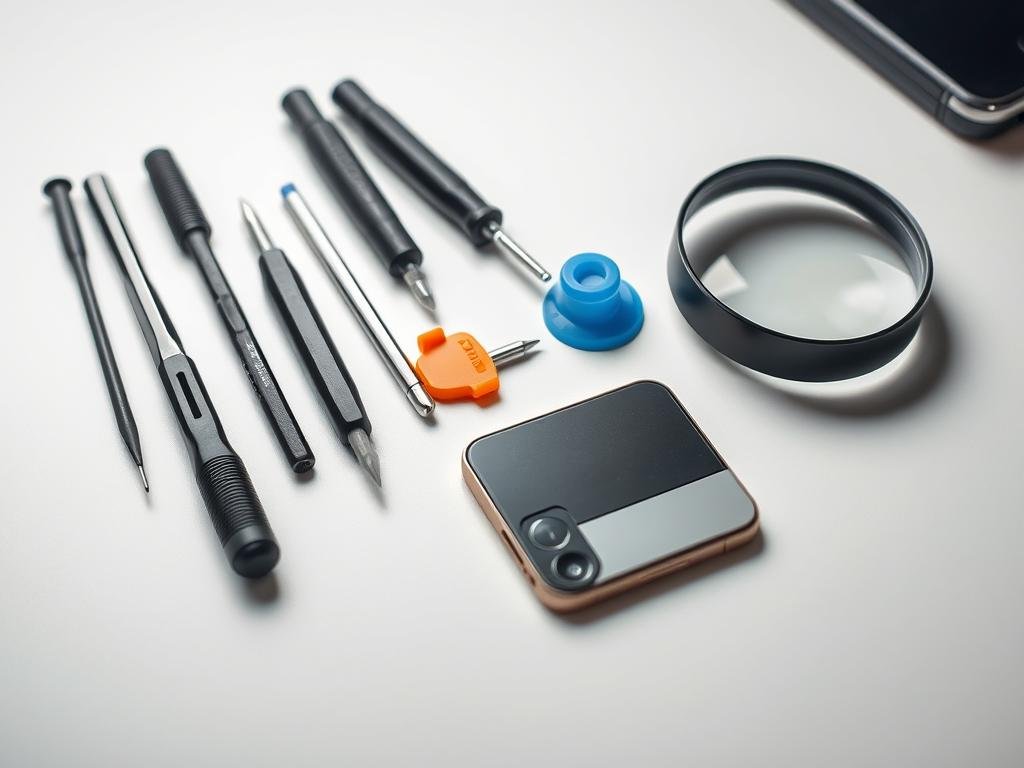
Optional Tools for Advanced Repair
For more complex repairs or cleaning, you might also need:
- Isopropyl alcohol and Q-tips for cleaning dust and debris.
- A canned air duster to remove dust from tight spaces.
- Precision glue for reattaching small parts.
These tools are great for deep cleaning and precise repairs. They help make sure your device’s controls work right.
Step-by-Step Guide to Disassembling Your Smartphone
To fix your smartphone’s volume and power buttons, start by carefully taking it apart. This involves several steps that need focus and the right tools. Understanding how to manage your smartphone’s parts is key to device power management.
Preparing Your Workspace
Before starting, make sure your workspace is ready to avoid damage to your phone’s parts.
- Work on a clean, flat surface.
- Use an anti-static mat or strap to protect your device from static damage.
Proper mobile phone settings can hide problems, but for fixing hardware like buttons, you must open your device. First, turn off your phone. Then, remove any SIM or SD cards to avoid damage.
Opening the Device Safely
To safely open your device, you’ll need precision screwdrivers and a plastic spudger.
- Start by taking out the screws from the outer casing.
- Use the spudger to gently pry open the casing, moving around the edges.
As you open your phone, watch out for internal parts and cables. It’s important to keep track of the screws and parts you remove. This way, you can put everything back together correctly later.
By following these steps, you can get to the volume and power buttons for repair or replacement. This ensures your device works well and lasts longer.
Repairing Volume Buttons: A Detailed Process
When your smartphone’s volume buttons stop working, it’s time to fix them. These buttons are key for adjusting sound levels. Without them, your device isn’t as useful.
Inspecting the Volume Button Mechanism
Start by checking the volume button mechanism for damage or dirt. Sometimes, the problem is just dirt under the button. To see inside, you’ll need to open your phone, following the steps from before.
After you get to the volume button area, look for any wear or damage. Make sure the buttons are lined up right and free from debris. A good clean can often fix the problem.
Replacing Faulty Components
If you find damage, you might need to replace parts. This could mean fixing a broken tab or swapping out the whole volume button setup. For help with fixing a tab, check out ifixit for step-by-step advice.
When you replace parts, make sure they fit your phone model. Wrong parts can cause more harm. After fixing, put your phone back together and test the volume buttons to make sure they work.
By following these steps, you can fix your phone’s volume buttons. Regular cleaning can also prevent problems later on.
Repairing Power Buttons: A Comprehensive Approach
When your smartphone’s power button stops working, it can really mess up your day. But, there are ways to fix it. The power button is a key hardware control that needs careful fixing.
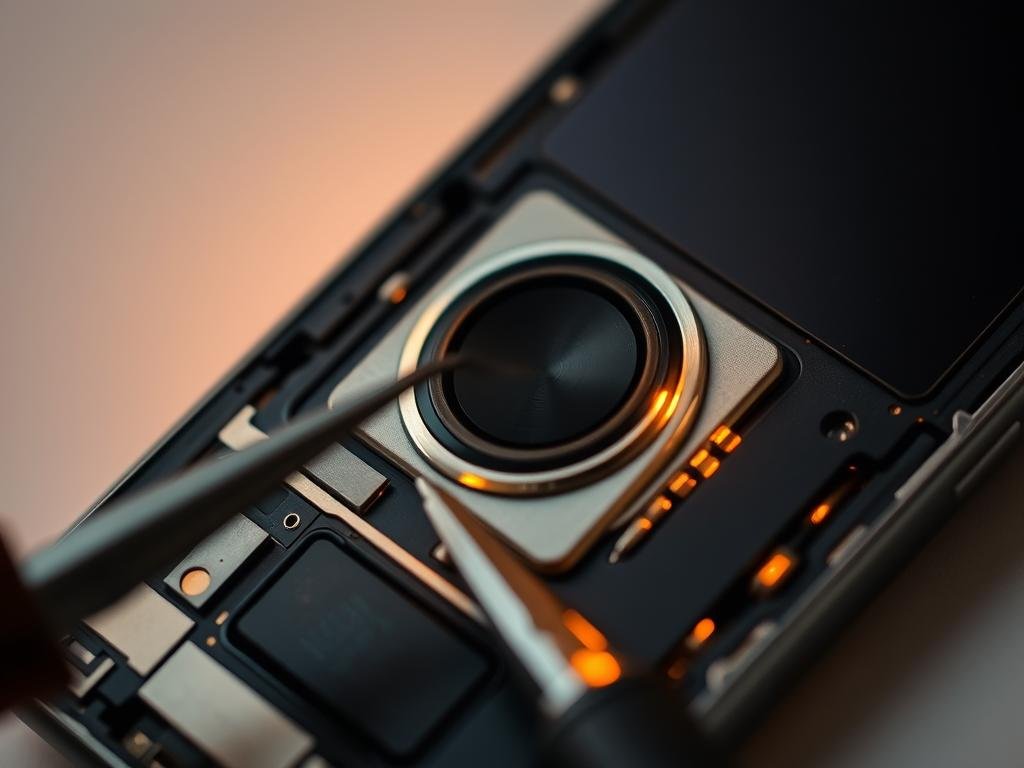
Diagnosing Power Button Issues
To fix the power button, you need to find out what’s wrong. Common problems include:
- Button not responding
- Intermittent functionality
- Button getting stuck
It’s important to check the power button for any damage or dirt. This can help you figure out the problem.
Replacing or Fixing the Power Button
After finding the issue, you can either clean or replace the power button. Here’s how:
- Take apart your smartphone to get to the power button.
- Look at the button and its connections for any damage or rust.
- Clean the button and its area if there’s dirt or dust.
- If the button is too damaged, swap it out with a new one that fits your phone.
Putting your phone back together after fixing the power button takes time and care. You need to make sure everything fits right.
By following these steps, you can fix or replace your smartphone’s power button. This will get your phone working smoothly again.
Cleaning Techniques for Better Performance
Cleaning your smartphone’s buttons is easy and can make them work better. Dust and dirt can build up and cause problems. Regular cleaning keeps your device running smoothly and lasts longer.
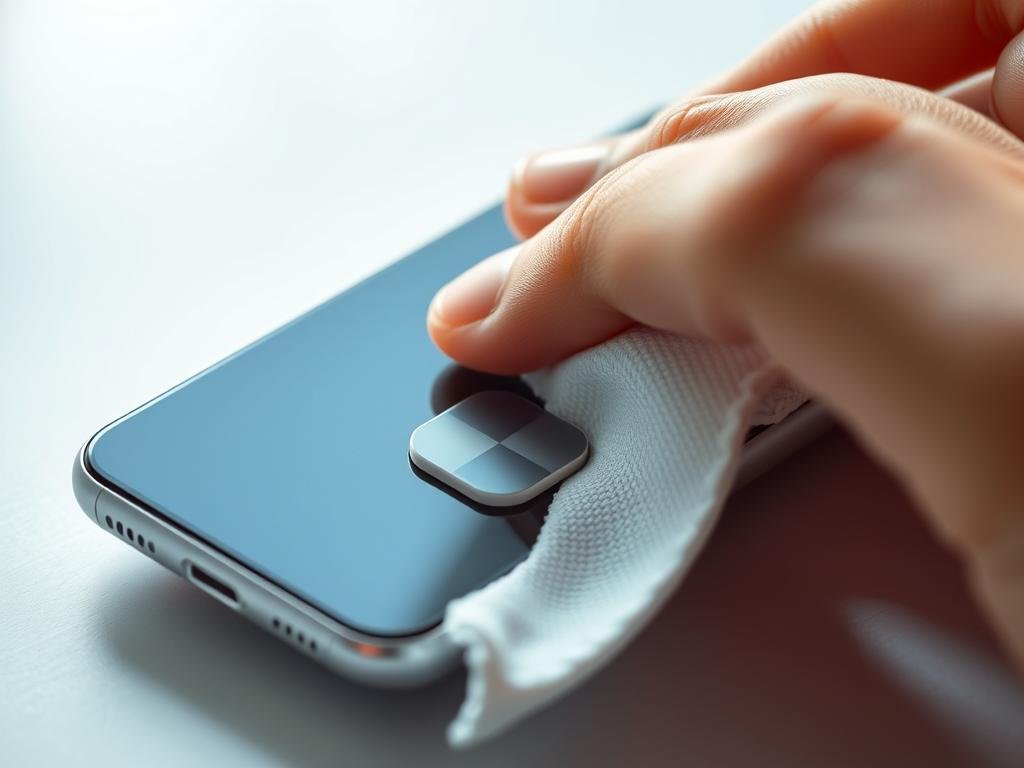
Cleaning Dust and Debris
To clean around your smartphone’s buttons, start with isopropyl alcohol and Q-tips. Gently wipe the area to get rid of dirt or grime. Then, use canned air to blow out any leftover debris from tight spots.
This method is great for getting rid of dust and particles that can mess with button function. For tough spots, you might need to clean a few times. But be careful not to press too hard to avoid damage.
Best Practices for Regular Maintenance
Regular cleaning is essential for keeping your smartphone’s buttons in top shape. Clean them every few weeks, or more if they start to act up. Also, check your mobile phone settings to see if the problem is software-related.
Using a protective case can also help. It keeps the buttons clean when you’re not using your phone. This reduces the amount of debris that can get stuck.
Tips for Avoiding Future Button Failures
To keep your smartphone’s controls working well, follow a few simple steps. Being careful with your device and taking action early can lower the chance of button problems.
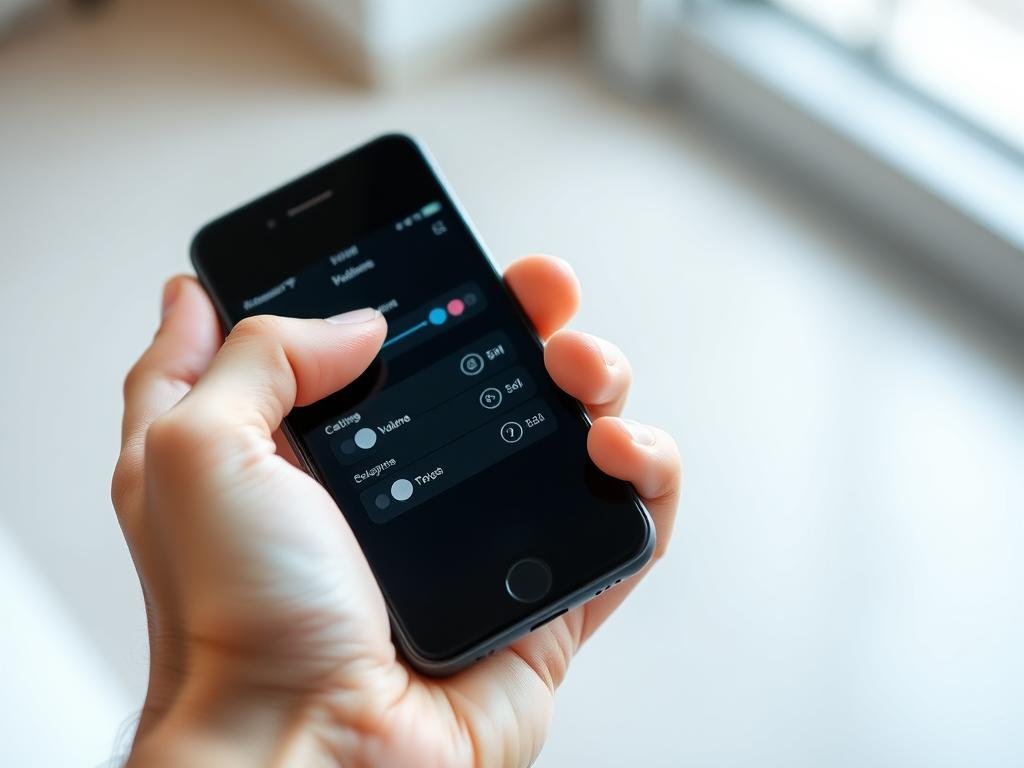
Handling Your Device with Care
One key way to avoid button issues is to handle your phone carefully. Don’t drop it or press too hard, as this can damage the buttons. Also, avoid using your phone when your hands are wet or in harsh places to prevent moisture damage.
Experts say many button failures come from drops or careless use. Being more careful can help your phone’s buttons last longer.
Using Protective Cases
Using protective cases is another smart move to reduce button wear. A good case can cushion your phone, lessen button pressure, and shield it from the environment. Choose a case that fits your phone well and offers good protection without making it hard to use.
“A good protective case is like having an insurance policy for your smartphone. It not only protects the device from drops and bumps but also helps in maintaining the overall condition of the buttons and other critical components.”
By handling your phone with care and using protective cases, you can make it last longer. Regular care and being proactive about your phone’s maintenance will keep it working well for a longer time.
When to Seek Professional Help
At times, you might need a pro to fix your smartphone’s volume and power buttons. DIY fixes are great, but some problems need special tools and skills.
Signs You Should Consult a Technician
Look out for these signs to know when to call a pro: if your buttons don’t work, you have random problems, or DIY fixes didn’t work. Also, if your phone is under warranty, fixing it yourself could break it.
Some common signs you need a pro include:
- Issues keep coming back after trying to fix them
- Buttons or the area around them are damaged
- Buttons make strange sounds or vibrate
For more help with smartphone problems, check out this resource on what to do if your phone won’t turn on.
Choosing the Right Repair Service
When picking a repair service, think about their reputation, cost, and warranty. A good service will tell you what’s wrong and how much it will cost. Look for good reviews and ask people you trust for recommendations.
| Criteria | What to Look For |
|---|---|
| Reputation | Positive reviews, recommendations |
| Cost | Transparent pricing, competitive rates |
| Warranty | Warranty on parts and labor |
To prevent damage like overheating, check out these tips on keeping your phone cool.
Knowing when to get help and how to pick a good repair service will help fix your phone’s buttons right and fast.
DIY Repair vs. Professional Repair: What to Consider
Should you fix your phone’s volume and power buttons yourself or get a pro to do it? It’s important to think about a few things. These include how tech-savvy you are, how hard the repair is, and what it will cost.
Pros and Cons of DIY Repairs
Fixing your phone yourself can save money and let you work at your own speed. But, it also has risks. You might damage your phone’s controls more.
- Pros:
- Cost-effective
- Immediate action
- Learning experience
- Cons:
- Risk of further damage
- Lack of warranty
- Technical challenges
Cost Comparison: DIY vs. Professional
The price to fix your phone’s functions can change a lot, depending on if you do it yourself or get a pro. DIY might seem cheaper at first, but think about the cost of tools and parts.
| Repair Type | Cost Factors | Estimated Cost |
|---|---|---|
| DIY Repair | Replacement parts, tools | $50-$150 |
| Professional Repair | Labor, parts, warranty | $100-$300 |
Choosing between DIY and professional repair depends on your tech comfort and budget. If you’re not sure about fixing it yourself, getting a pro can make sure it’s done right and fast.
Testing Your Repairs: Ensuring Everything Works
It’s key to check if your smartphone’s buttons work right after fixing them. After fixing your device’s volume and power buttons, you need to test them well. This confirms they work as they should.
Performing Functional Checks
To make sure your repairs were done right, do these checks:
- Press the volume up and down buttons many times to see if they work well and the same every time.
- Turn your device on and off a few times with the power button to find any odd behavior.
- See if the buttons feel loose or stuck, and make sure they work right.
Tips for effective testing: Test your device’s buttons in different places and conditions. This ensures they work well everywhere. Try using them with a screen protector or case to see if it affects them.
Troubleshooting Persistent Issues
If you find problems like unresponsive buttons or odd behavior, you might need to fix your repair. Common issues include:
- Flex cables not connected right or feeling loose.
- Button parts not aligned or installed wrong.
- Dust or dirt blocking the button mechanisms.
Re-examine your repair process and fix any mistakes. If problems keep happening, look for help online or get advice from experts on device power management.
By testing your repairs well and fixing any problems, you can make sure your smartphone’s buttons work well and reliably.
Conclusion: Keeping Your Smartphone in Top Shape
After fixing your smartphone’s volume and power buttons, it’s key to keep it in good shape. Regular care ensures your controls work right and boosts your phone’s performance. This helps avoid future problems.
Key Maintenance Tips
Rebooting your Android device often is a good idea. It clears out temporary files and makes your phone more stable. For more on restarting your Android, check out GM Tech Studio.
Best Practices for Long-Term Care
Take care of your device, use protective cases, and clean it often. These steps are simple but effective. They help your phone last longer and work better, giving you a smooth experience.
FAQ
What are the common symptoms of faulty volume and power buttons on a smartphone?
Signs include buttons that don’t work or feel sticky. This can happen due to software problems, physical damage, or dirt.
What tools do I need to repair faulty volume and power buttons?
You’ll need a screwdriver set, plastic spudgers, and tweezers. For more complex tasks, you might also use special cleaning solutions and glue.
How do I disassemble my smartphone to access the volume and power buttons?
First, set up a safe area. Then, use the right tools to open your phone step by step.
How do I repair faulty volume buttons?
Check the buttons for damage or dirt. Clean them if needed. If parts are broken, you might need to replace them.
What are the steps to diagnose and repair issues with the power button?
Start by figuring out what’s wrong. Clean or replace the button if needed. Make sure your phone turns on right.
How can I maintain my smartphone’s buttons to prevent future issues?
Clean them regularly. Be gentle with your phone. Use a case to protect it.
When should I seek professional help for repairing my smartphone’s buttons?
Get help if repairs don’t work or if you’re not sure what to do. Choose a reliable repair service.
What are the pros and cons of DIY repairs versus professional repairs?
DIY saves money and gives you control. But, it might not have a warranty. Pros of professional help include a warranty and expert advice, but it costs more. Think about what’s best for you.
How do I test my smartphone’s buttons after completing repairs?
Check if the buttons work right. If not, try to fix the problem. Make sure everything is working as it should.
What are some best practices for regular maintenance of my smartphone’s hardware controls?
Clean your phone often. Be careful with it. Use a case to protect it. This keeps your controls working well.
